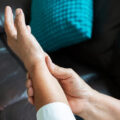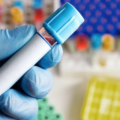Normal sweating or excessive sweating?
Sweating (Normal Amounts) is a bodily function that helps regulate your body temperature. Also called perspiration, sweating is the release of a salt-based fluid from your sweat glands.
Hyperhidrosis (excessive sweating) may be either focal or generalised, and either primary (no underlying cause) or secondary (underlying cause identified). Common triggers include emotion and spicy foods.
Primary focal hyperhidrosis may affect the axillae, palms, soles or scalp, and has no underlying cause. It usually starts in childhood or adolescence, but can occur at any age. Palmar and plantar hyperhidrosis may be present at birth.
Secondary focal hyperhidrosis involves specific areas of the body, but is caused by an underlying condition.
Generalised hyperhidrosis affects the entire body and is usually caused by medical conditions or drugs.
Complications of hyperhidrosis
Fungal infections: Hyperhidrosis increases the risk of developing fungal infections, particularly on the feet – most commonly fungal nail infections and athlete’s foot. This is because excessive sweat combined with wearing socks and shoes creates an ideal surrounding for fungi to grow. Fungal infections can be treated with antifungal creams. More severe cases may require antifungal tablets or capsules.
Skin conditions: Excessive sweat can make you more vulnerable to certain skin conditions, such as: warts, boils and Eczema.
Body odour: Although people with hyperhidrosis sweat a lot, most don’t have problems with body odour. This is because hyperhidrosis doesn’t usually affect the sweat glands responsible for producing unpleasant-smelling sweat – called the aprocrine sweat glands. However, if bacteria are allowed to break down the sweat, it can start to smell unpleasant. Eating spicy food and drinking alcohol can also make sweat secreted from the eccrine smell.
Emotional impact: The emotional impact of living with hyperhidrosis can be severe. Many people with the condition feel unhappy and, in some cases, depressed.
Treatment for Excessive Sweating
Patient demand for non-invasive, no-downtime procedures for the treatment of aesthetic and medical conditions is surging. Radiofrequency (RF) electromagnetic energy has become a common, non-invasive, safe and effective modality. In these conditions, the RF energy applicator comprises a monopolar or bipolar electrode configuration and is applied in a stationary mode for deep skin heating, without being absorbed in the skin’s biological chromophores and without causing ablation of the epidermis and dermis.
Sympathectomy by radiofrequency ablation
Following subcutaneous local anaesthetic in filtration, a Cosman RFG-1A Lesion Generator was used for RF thermal ablation. Under fluoroscopic guidance, the 5 mm active cannula of the RF device was advanced to the T4 sympathetic ganglion. When the probe reached the desired point, the level of the cannula was tested by injection of radiopaque material over the parietal pleura. After this test, the electrode of the RF device was placed on the cannula. After that, RF thermal coagulation was applied at 75°C for 90 s. Following thermal coagulation, 2 ml of 2% lidocaine was applied through the cannula.

References
http://www.patient.co.uk/
http://www.nhs.uk/
http://www.healthline.com/
http://www.almalasers.com/






